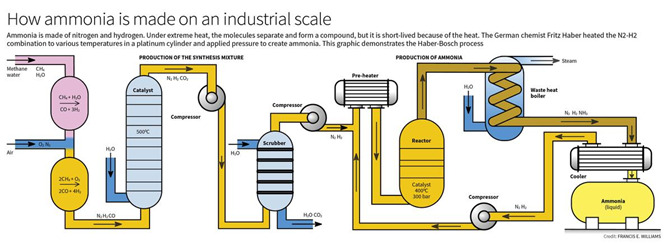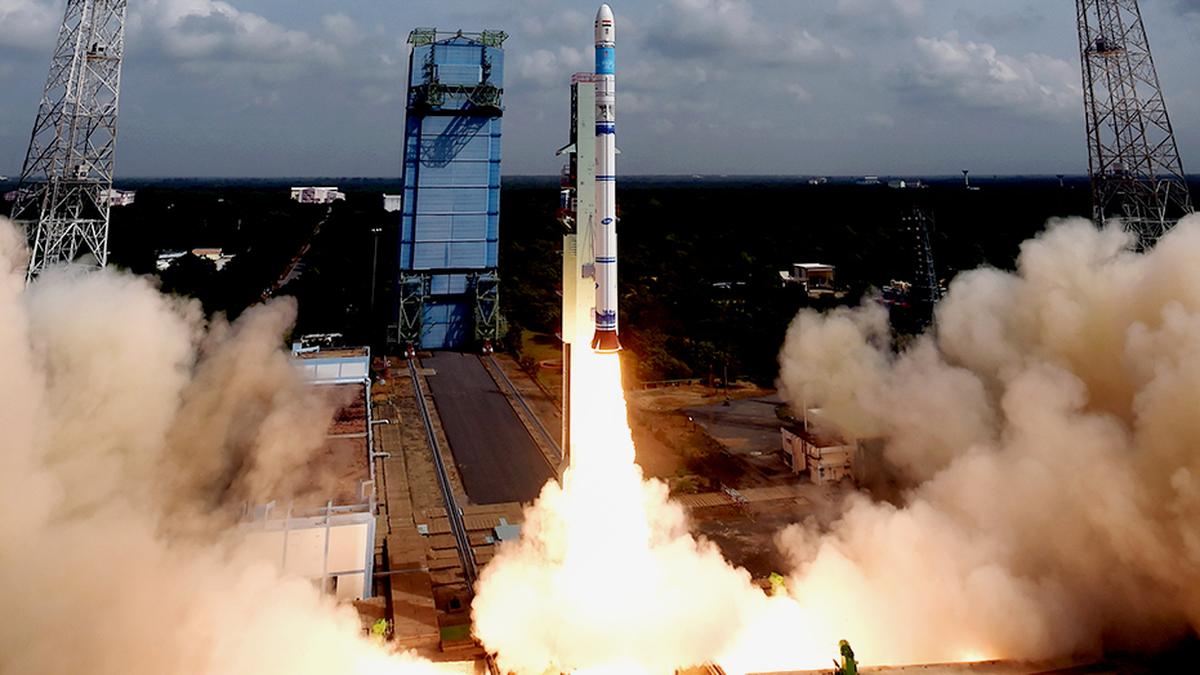- Courses
- GS Full Course 1 Year
- GS Full Course 2 Year
- GS Full Course 3 Year
- GS Full Course Till Selection
- Answer Alpha: Mains 2025 Mentorship
- MEP (Mains Enrichment Programme) Data, Facts
- Essay Target – 150+ Marks
- Online Program
- GS Recorded Course
- Polity
- Geography
- Economy
- Ancient, Medieval and Art & Culture AMAC
- Modern India, Post Independence & World History
- Environment
- Governance
- Science & Technology
- International Relations and Internal Security
- Disaster Management
- Ethics
- NCERT Current Affairs
- Indian Society and Social Issue
- NCERT- Science and Technology
- NCERT - Geography
- NCERT - Ancient History
- NCERT- World History
- NCERT Modern History
- CSAT
- 5 LAYERED ARJUNA Mentorship
- Public Administration Optional
- ABOUT US
- OUR TOPPERS
- TEST SERIES
- FREE STUDY MATERIAL
- VIDEOS
- CONTACT US
The Haber-Bosch Process and Its Impact on Food and the Environment
The Haber-Bosch Process and Its Impact on Food and the Environment
15-10-2024
- The Haber-Bosch process enabled industries to produce cheap synthetic fertilizers, leading to a sevenfold increase in the global food supply during the 20th century.
- This process now removes 100 million tonnes of nitrogen from the atmosphere annually and converts it into fertilizer, adding 165 million tonnes of reactive nitrogen to the soil.
- In contrast, natural biological processes replenish only 100-140 million tonnes of reactive nitrogen per year. Without this industrial synthesis of ammonia, it would have been impossible to meet the global food demand.
What is the nitrogen molecule?
- Composition: Nitrogen (N2) molecules in the atmosphere contain two nitrogen atoms bound by a strong triple bond, making it nearly unreactive.
- Energy Requirement: Breaking the nitrogen bond requires high energy (946 kJ/mol). Once broken, nitrogen forms reactive compounds like ammonia (NH3) or nitrates (NO3-), essential for plant growth.
- Plant Requirement: Plants need reactive nitrogen to synthesize enzymes, proteins, and amino acids. Healthy plants contain 3-4% nitrogen.
|
Ammonia (NH3), colourless, pungent gas composed of nitrogen and hydrogen. It is the simplest stable compound of these elements and serves as a starting material for the production of many commercially important nitrogen compounds. The major use of ammonia is as a fertilizer. |
Natural Availability of Nitrogen
- Lightning: Lightning generates enough energy to break nitrogen bonds, producing nitrogen oxides, which then form nitric and nitrous acids.
- These acids return to the soil via rain, adding about 10 kg of nitrogen per acre annually.
- Microbial Action: Bacteria like Azotobacter and Rhizobia form symbiotic relationships with plants to convert atmospheric nitrogen into reactive forms.
- Aquatic ferns like Azolla, with cyanobacteria, also help convert nitrogen.
What is the nitrogen cycle?
- Plant Absorption: Plants absorb reactive nitrogen from the soil as ammonium (NH4+) or nitrate (NO3-).
- Nitrogen in Humans: Humans and animals need nine pre-made nitrogen-rich amino acids from plants. Nitrogen forms about 2.6% of the human body and returns to the soil through waste and decomposition.
- Nitrogen Depletion: Important crops like rice, wheat, and corn deplete soil nitrogen quickly. As the population grows, farmers compensate it with fertilizers.
- Natural Fertilization: Farmers used legumes, ammonium-bearing minerals, and natural nitrates to boost nitrogen in soil before synthetic fertilizers.
What is the Haber-Bosch Process?

- The Haber-Bosch process synthesizes ammonia directly from hydrogen and nitrogen, developed by Fritz Haber.
- Haber received the 1918 Nobel Prize in Chemistry for making ammonia production economically feasible.
- Carl Bosch scaled it into an industrial process using high-pressure techniques and a catalyst, earning a joint Nobel Prize in 1931. It was the 1st industrial method to use high pressure for a chemical reaction.
- Process: Nitrogen from the air combines with hydrogen under high pressure and moderate heat. An iron-based catalyst lowers the required temperature, and ammonia is removed as soon as it's formed to maintain equilibrium.
- Higher pressure and lower temperature yield more ammonia.
- It remains the most cost-effective method for nitrogen fixation and continues as a cornerstone of the chemical industry worldwide.
Downsides of Fertilizers
- Reduced Crop Yields and Quality: Imbalanced fertilizer application can decrease crop yields and quality, leading to financial losses for farmers.
- Soil Degradation: Overuse or underuse of fertilizers causes nutrient imbalances, leading to soil degradation, erosion, and reduced fertility over time.
- Environmental Pollution: Excess fertilizers result in nutrient runoff (nitrogen, phosphorus) into water bodies, causing eutrophication, algal blooms, and other environmental issues.
- Health Risks: Overuse of fertilizers leads to nitrate accumulation in crops, posing health risks when consumed in large amounts.
- Environmental Impact: Excess nitrogen in fertilizers harms the environment by over-nourishing plants, accelerating biochemical reactions, and releasing reactive nitrogen into the atmosphere.
What is Green Ammonia?
|
Must Check: Best IAS Coaching In Delhi
UPSC Prelims Result 2024 Out: Expected Cut Off & Other Details, UPSC Prelims 2024 Answer with Explanation, Daily Prelims Quiz, Daily Current Affairs, MONTHLY CURRENT AFFAIRS TOTAL (CAT) MAGAZINE, Best IAS Coaching Institute in Karol Bagh, Best IAS Coaching Institute in Delhi, Daily Mains Question Answer Practice, ENSURE IAS UPSC Toppers, UPSC Toppers Marksheet, Previous Year Interview Questions, UPSC Syllabus




